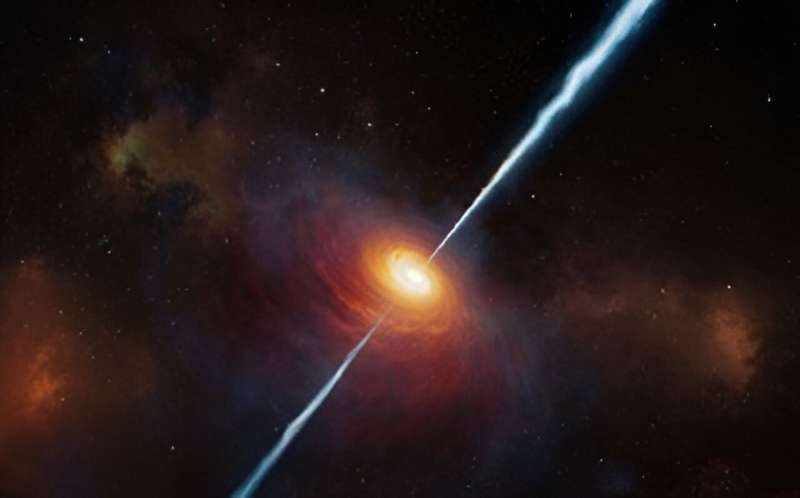This article has been reviewed according to Science X's editorial process and policies. Editors have highlighted the following attributes while ensuring the content's credibility:
fact-checked
trusted source
proofread
Einstein's other theory of gravity could have the recipe to relieve 'Hubble trouble'

A recent study has investigated teleparallel gravity and its potential to resolve tension surrounding the expansion of the universe in a way that general relativity can't.
In the early 20th century, our understanding of the universe was turned on its head when observations made by Edwin Hubble revealed that the very fabric of the cosmos was stretching.
At the close of the same century, this realization was made even more complicated when, by observing distant supernovas as they move away from Earth, two separate teams of scientists discovered that not only is the universe expanding, but this rate of expansion is accelerating.
The cause of this acceleration is a mystery and has been given the placeholder name "dark energy"; the best current explanation for it is the cosmological constant that accounts for a form of background energy called vacuum energy.
The rate of the expansion of the universe is known as the Hubble constant, which describes the proportionality between the distance of a galaxy from Earth and the velocity by which it recedes.
This has been a headache for physicists because the two major ways of determining the Hubble constant are in vast disagreement. This issue is dubbed the "Hubble tension," and one way to explain it would be by extending our current best model of gravity, general relativity, posited by Einstein in 1915.
A paper published in the journal Physics of the Dark Universe by Celia Escamilla Rivera, a cosmologist at Instituto de Ciencias Nucleares, Universidad Nacional Autónoma de México, and her co-researchers, attempts to tackle dark energy and relieve the Hubble tension.
"We found that by using gravitational models extended beyond general relativity and new cosmological datasets [observations of distant quasars] we can confront the Hubble tension and the dark energy issue at local scales," Rivera says.
"Using numerical and computational methods, we performed analysis using different proposed models in 'teleparallel gravity' tested with two different cosmological samples that measured distances in the local universe."
Teleparallel gravity is an alternative theory to general relativity, also devised by Einstein. This "other theory of gravity" uses a different recipe of equations to explain gravity without the curvature of spacetime, and also seeks to unite it with one of the universe's other fundamental forces, electromagnetism.
"Recently, teleparallel gravity has been gaining popularity due to the promise that it could solve the cosmological issue related to the Hubble tension and could explain the nature of the late-time cosmic acceleration without invoking a cosmological constant," Rivera says.
Rivera and her colleagues tested the parameters of this alternative theory of gravity using two new datasets of distant and highly red shifted quasars, the bright regions at the heart of galaxies that are powered by feeding supermassive black holes, observed in ultraviolet, X-ray, and visible light.
"We are interested in the subject because teleparallel gravity is a suitable candidate for an alternative proposition to general relativity that solves different cosmological issues, as well as having some interesting theoretical properties," Rivera concludes.
"For a wider audience, it is interesting as we are testing alternative proposals to general relativity to understand the universe better, and for experts in the field, it is an update to the state-of-the-art regarding specific models in teleparallel gravity, also using relatively new quasar samples at high redshifts."
More information: Rodrigo Sandoval-Orozco et al, f(T) cosmology in the regime of quasar observations, Physics of the Dark Universe (2023). DOI: 10.1016/j.dark.2023.101407
Provided by SciencePOD





















